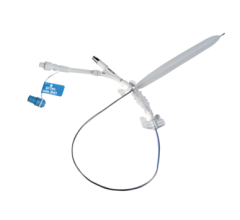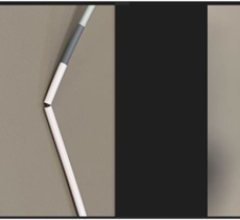
August 14, 2019 — Concept Medical Inc. (CMI) has been granted "Breakthrough Device Designation" from the U.S. Food and Drug Administration (FDA) for MagicTouch PTA, its sirolimus drug coated balloon (DCB) catheter, for the treatment of peripheral artery disease (PAD) in below-the-knee (BTK) applications.
Concept Medical Inc. has pioneered the Sirolimus drug delivery platform technology (Nanolute technology), which has a proven commercial history in the coronary applications in more than 30,000 patients worldwide, according to the company. MagicTouch PTA sirolimus coated balloon is developed using this Nanolute Technology for use in PAD.
The breakthrough device designation granted to MagicTouch PTA offers Concept Medical Inc. an opportunity to interact with the FDA’s experts through several different program options to efficiently address topics as they arise during the premarket review phase, which can help manufacturers receive feedback from the FDA and identify areas of agreement in a timely way. Manufacturers can also expect prioritized review of their submission. Under the program, FDA will provide CMI with priority review and interactive communication regarding device development and clinical trial protocols, through to commercialization decisions.
The first ‘Breakthrough Device Designation’ received by Concept Medical Inc. was on April 30, 2019 for its MagicTouch SCB, for the treatment of coronary artery disease (CAD) in patients with in-stent restenosis.
In an ongoing clinical study (XTOSI), Associate Prof. Edward Choke, principal investigator of the study and chief of vascular surgery, Sengkang General Hospital, Singapore, said, “This study is the world’s first pilot study to investigate the safety and efficacy of novel MagicTouch PTA sirolimus drug coated balloon (SCB) in the treatment of below-the-knee arterial lesions in addition to femoropopliteal lesions. The majority of patients enrolled had major comorbidities (diabetes and end stage renal failure) and the indication for angioplasty was for severe critical limb ischemia (more than 90 percent had the most severe Rutherford scores of 5 or 6). The extent of peripheral arterial disease treated were also severe, and about 80 percent of patients did not have any patent below-the-knee arteries before angioplasty. I am very encouraged by the excellent results so far in this challenging cohort of patients. Device and technical success were both 100 percent. Freedom from device and procedure related mortality was 100 percent. Limb salvage rate at 30 days was 97 percent. At six months, freedom from clinically driven target lesion revascularization (TLR) was 91 percent; and primary patency, independently and blindly assessed by duplex ultrasound, was 82 percent. I did not encounter any distal embolization or 'slow flow phenomenon' after application of SCB in BTK vessels.”
Sahil Parokh, M.D., an interventional cardiologist and associate professor of medicine and director of endovascular services at the Columbia University College of Physicians and Surgeons, said, “The breakthrough designation demonstrates how important it is for us to have new technologies for BTK intervention. Patients with critical limb ischemia (CLI) represent an enormous burden to our healthcare system and comprehensive care for these patients begins with effective revascularization. The MagicTouch PTA will hopefully bring us closer to our goals of reducing amputations in the U.S. and the world.”
Peripheral vascular disease is a circulatory problem in which the peripheral blood vessels – usually the arteries of the legs – are starved of blood supply due to narrowing, blockage or spasm of the supplying blood vessels. If peripheral vascular disease (PVD) occurs only in the arteries, it is called peripheral artery disease (PAD). Most of the time PAD results from narrowing of the lumen of the blood vessels caused by inflammation, plaque buildup or tissue damage. Diabetes is a major risk factor for PAD — more than 85 percent of patients with diabetes will develop PAD in their lifetime. CLI is a manifestation of peripheral arterial disease that occurs as chronic ischemic rest pain or ischemic skin lesions, ulcers or gangrene. Infra-popliteal or below-the-knee (BTK) atherosclerotic arterial disease, either alone or combined with aortoiliac and femoropopliteal vascular disease, is the leading cause of critical limb ischemia and resultant amputations.
PAD affects more than 8 million people in the United States alone.
For more information: www.conceptmedical.com
Related PAD Content
New AHA Statement Highlights Need for Early Diagnosis, Treatment With Critical Limb Ischemia


 June 13, 2024
June 13, 2024 








